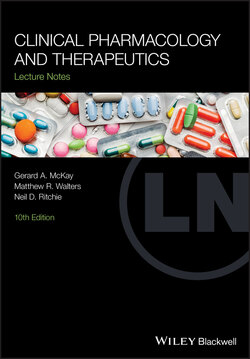Читать книгу Clinical Pharmacology and Therapeutics - Группа авторов - Страница 160
Adverse drug reactions
ОглавлениеDrug treatment is inherently dangerous. While no prescriber intends to cause harm with the drugs they prescribe, some patients will inevitably experience adverse effects from treatment. Such adverse effects can range from the mild, for example transient nausea after taking the tablets, through to life‐threatening complications. Admission to hospital due to harm related to prescription drugs is common and this is an important reason to prescribe medication only when justified.
Adverse drug reactions can be broadly classified into two groups. Type A reactions are those that are predictable, based on the known pharmacological action of the drug in question. They are common, usually dose related and typically happen relatively soon after the drug is first prescribed. In contrast, Type B reactions are those that cannot be easily predicted from the known effects of the drug. Such adverse effects are typically uncommon, not dose dependent and may occur a long time after the drug was first given. Examples of each are shown in Table 4.1.
Table 4.1 Examples of different types of drug reaction.
| Type A (predictable) adverse effects | Type B (unpredictable) adverse effects |
|---|---|
| Dizziness or other symptoms of low blood pressure in patients taking anti‐hypertensivesSerious infections in patients taking immuno‐suppressive drugs for inflammatory disorders | Anaphylaxis following a dose of penicillinAbsence of white blood cells in a patient taking clozapine for psychosisSevere hyponatraemia in a patient taking fluoxetine for depression |
